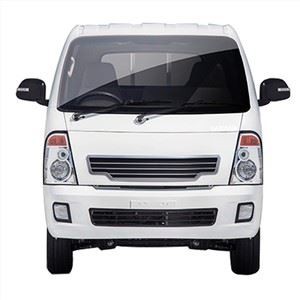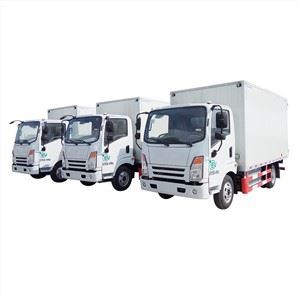Introduction
When it comes to waste management, choosing the right dumpster is crucial for commercial and residential projects alike. Among the various types available, a rear loader dumpster stands out for its functionality and efficiency. This article will explore everything you need to know about rear loader dumpsters, including their benefits, uses, size options, and rental tips. By the end, you will have a thorough understanding of how rear loader dumpsters can help streamline your waste disposal needs.
What is a Rear Loader Dumpster?
A rear loader dumpster is a type of waste container that is typically loaded from the back. This design allows for more efficient loading, especially in areas with limited access or space constraints. Rear loader dumpsters are larger than front loader dumpsters and are specifically designed for commercial use, although they can also be utilized in residential projects.
How Rear Loader Dumpsters Work
The operation of a rear loader dumpster involves a truck with a specifically designed rear-load mechanism. Waste collectors drive the truck to the dumpster’s location, and the truck’s mechanism is used to lift the container and empty its contents into the truck for transport. This process is efficient and safe, minimizing the need for manual labor.
Characteristics of Rear Loader Dumpsters
Size Options
Rear loader dumpsters come in a variety of sizes to accommodate different waste disposal needs. The standard sizes include:
| Size (Cubic Yards) | Dimensions (Height x Width x Length) | Typical Usage |
|---|---|---|
| 2 Cubic Yards | 3′ x 5′ x 6′ | Small businesses, restaurants |
| 4 Cubic Yards | 4′ x 6′ x 6′ | Mid-sized businesses |
| 6 Cubic Yards | 5′ x 6′ x 6′ | Larger businesses, construction sites |
| 8 Cubic Yards | 6′ x 6′ x 6′ | High-volume waste generation |
Design and Construction
Rear loader dumpsters are typically made of heavy-duty steel, which ensures they can withstand the wear and tear of daily use. They often feature reinforced seams and a weather-resistant coating to protect against rust and corrosion. The rear access design allows for quick loading and reduces spillage and overflow, which are common issues with other dumpster types.
Benefits of Using Rear Loader Dumpsters
Space Efficiency
One of the most significant advantages of rear loader dumpsters is their ability to fit into tighter spaces. Their design allows them to be easily placed in narrow alleys or small parking lots, making them an ideal choice for urban businesses.
Versatility
These dumpsters are suitable for various types of waste, including general garbage, recyclables, and construction debris. Their flexibility makes them a popular choice across multiple industries, from retail to construction.

Increased Safety
By minimizing the need for workers to manually load waste, rear loader dumpsters enhance safety at job sites. The automated lifting system reduces the risk of injuries associated with lifting heavy items.
When to Use a Rear Loader Dumpster
Understanding when to utilize a rear loader dumpster is vital for effective waste management. Here are some scenarios where these dumpsters shine:

Commercial Use
Retail stores, restaurants, and hotels generate substantial waste that needs regular disposal. A rear loader dumpster can handle this volume efficiently, allowing for scheduled pickups.
Construction and Renovation Projects
Construction sites often accumulate a variety of waste, including heavy items. Rear loader dumpsters can accommodate this diverse waste and are robust enough for construction debris.
Municipal Waste Management
Many municipalities employ rear loader dumpsters in public parks or community centers to facilitate easy waste disposal for visitors.
How to Rent a Rear Loader Dumpster
Identifying Your Needs
Before renting a rear loader dumpster, assess your waste management needs. Consider the volume of waste generated, the type, and the duration of the rental. This evaluation will guide you in selecting the appropriate size and rental period.
Finding a Rental Service
Many companies offer dumpster rental services. Research local providers, read reviews, and compare prices. Look for companies that display transparency in their pricing models, including any additional fees for overages or late returns.
Understanding Rental Agreements
Ensure you understand the rental agreement, including terms of use, pickup schedules, and what types of waste are permitted. Not adhering to guidelines may incur additional charges.
Tips for Using a Rear Loader Dumpster Effectively
Follow Local Regulations
Before placing your dumpster, check local laws and regulations about where you can position it. Some areas may require permits to place a dumpster on public property.
Organize Your Waste
To maximize space and convenience, organize your waste into recyclables, compostables, and general garbage. This practice not only conserves space in your dumpster but is also environmentally friendly.

Regular Maintenance
If you manage a business with a rear loader dumpster on-site, scheduling regular maintenance and cleaning can prevent unpleasant odors and promote hygiene.
Common Misconceptions About Rear Loader Dumpsters
Rear Loaders Are Only for Commercial Use
While rear loader dumpsters are widely used in commercial settings, they can also be useful for residential projects, especially for larger cleanouts or renovations.
They Are Inefficient
Many believe rear loader dumpsters are inefficient compared to front loaders. In reality, their design can be more efficient for certain waste types, especially in tight spaces.
FAQ Section
1. What types of waste can I dispose of in a rear loader dumpster?
Typically, you can dispose of general waste, construction debris, and recyclables. However, hazardous materials are generally prohibited.
2. How long can I rent a rear loader dumpster?
Rental periods vary by service provider but often range from a few days to several weeks. You can typically extend rentals if needed.
3. How is a rear loader dumpster serviced?
A truck with a rear loading mechanism collects the dumpster, lifts it, and empties its contents directly into the vehicle.
4. Are there weight limits for rear loader dumpsters?
Yes, each dumpster size has a designated weight limit. Exceeding this limit may result in additional charges.
5. Can I place the dumpster on the street?
It depends on local laws and regulations. Some areas require permits for dumpsters placed on public property.
6. What happens if I overload the dumpster?
Overloading can lead to additional fees, and the service provider may refuse to take the dumpster until it is within weight limits.